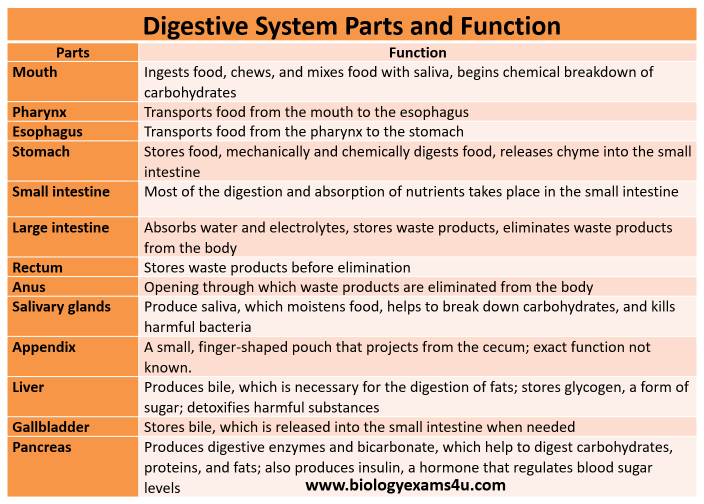The Human digestive system is a complex system of organs that breaks down food into nutrients that the body can absorb and use for energy, growth, and repair.
The digestive system is made up of two main parts: the alimentary canal and the accessory organs.
The alimentary canal is a long tube that runs from the mouth to the anus. It is lined with specialized cells that help to break down food. The alimentary canal is divided into the following parts:
- Mouth
- Pharynx
- Esophagus
- Stomach
- Small intestine
- Large intestine
- Rectum
- Anus
The accessory organs are not part of the alimentary canal, but they produce substances that are essential for digestion. The accessory organs include:
- Salivary glands
- Liver
- Gallbladder
- Pancreas
The digestive system works by a series of mechanical and chemical processes. The mechanical processes involve chewing, mixing, and moving food through the alimentary canal. The chemical processes involve the secretion of digestive enzymes, which break down food into smaller molecules.
The end products of digestion are absorbed into the bloodstream through the walls of the small intestine. The absorbed nutrients are then transported to the cells throughout the body, where they are used for energy, growth, and repair.
The following table summarizes the different parts of the Digestive system and their functions.
|
Digestive System Parts
and Function |
|
|
Parts |
Function |
|
Mouth |
Ingests food, chews,
and mixes food with saliva, begins chemical breakdown of |
|
Pharynx |
Transports food from
the mouth to the esophagus |
|
Esophagus |
Transports food from
the pharynx to the stomach |
|
Stomach |
Stores food mechanically and chemically digests food, releases chyme into the small |
|
Small intestine |
Most of the digestion
and absorption of nutrients takes place in the small |
|
Large intestine |
Absorbs water and
electrolytes, stores waste products, eliminates waste products from the |
|
Rectum |
Stores waste products
before elimination |
|
Anus |
Opening through which
waste products are eliminated from the |
|
Salivary glands |
Produce saliva, which
moistens food, helps to break down carbohydrates, and kills harmful |
|
Appendix |
A small, finger-shaped
pouch that projects from the cecum; exact function not known. |
|
Liver |
Produces bile, which
is necessary for the digestion of fats; stores glycogen, a form of sugar;
detoxifies harmful |
|
Gallbladder |
Stores bile, which is
released into the small intestine when |
|
Pancreas |
Produces digestive
enzymes and bicarbonate, which help to digest carbohydrates, proteins, and
fats; also produces insulin, a hormone that regulates blood sugar |
Watch our 6 minute Summary video for better understanding
- Visit our TpT store by clicking here.
- Download free resources or purchase Digestive system worksheets.
- Please rate the product and follow us on store.
Thank you so much.

